
- Articles
The Ten Shadiest and Most Devious Politicians/Statesmen/Revolutionists — From ancient times to the early 20th century
This list is admittedly a compilation of sundry and disparate political historic characters, ranging from do-gooder reformers with possibly good intentions to militant revolutionists who desired to overthrow the existing order of government, ostensibly to create a better world.
Deviousness and demagoguery are salient features in this list, which has come to include what I consider the top 10 shadiest and most devious politicians, statesmen, or revolutionaries to affect the course of history, up to the eve of the Russian Revolution. Regardless of the political category they fall in as politicians or revolutionaries, these political scoundrels, unorthodox statesmen, or misguided revolutionaries altered, or came close to altering, the course of history. These remarkable men were not established rulers or dictators for they did not reach supreme power for long. They were certainly charismatic or resourceful individuals, and because of one of those two characteristics, for a time they appealed to the masses via demagoguery, or gained temporary power via revolution, or attracted the support of the power elite because of their manifest talents and abilities. This list curiously includes several men who played a role in the French Revolution, players in their own dramas, who for the most part ended up surviving as either opportunists or flawed patriots, depending on one’s point of view.
These historic figures, though, are not interesting and intriguing just because of their devious and murky careers, or the controversial roles they played in their political dramas — but also because not all of them ended necessarily on the wrong side of history!

10. John Wilkes (1727-1797) was an English politician and journalist, and a highly controversial British Member of Parliament (MP), who attacked King George III and his government headed then by Lord North and other Royal ministers. Wilkes was expelled from Parliament in 1764 and imprisoned. Despite incarceration, Wilkes remained very popular and was repeatedly re-elected to Parliament, although he was not allowed to take his seat until 1774. Leader of Parliamentary radicals, he was a demagogue and a rabble-rouser but was beloved by commoners. Edward Gibbons called him a “profligate in principle and in practice.” (Durant, Rousseau and Revolution, p. 701) Wilkes was expelled three times from the House of Commons. His inclusion in this list is due to the fact he ultimately attained power, was elected Alderman (1777), then Lord Mayor. It was in these capacities that Wilkes gained the favor of King George and the approbation of conservatives. When Scottish Lord George Gordon led a “No Popery” mass insurrection that even attacked Parliament, Wilkes mounted his horse, led the militia against the rioters, quelled the insurrection, arrested the ring leaders, and restored order. While Alderman, Wilkes gained the forgiveness and favor of the king, but lost his popularity with the mob. His call for liberty, freedom of speech, and general enfranchisement has maintained his reputation as a champion of liberty, despite his personal failings.
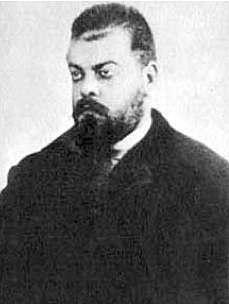
9. Alexander Parvus (1867-1924) was a German Jewish Marxist revolutionary operating within the Social Democratic Party of Germany, and a friend of Vladimir Lenin. Parvus’ notoriety resides in his involvement in the sealed train that took Lenin and the Bolsheviks from Germany to Russia, eventually bringing about the Russian Revolution of October 1917. Although Parvus was born in Belarus, a part of Russia, he moved to Germany early on, befriended the German Marxist revolutionaries Rosa Luxembourg and Wilhelm Liebknecht, and joined the Social Democrats there. He began writing socialist tracts and articles predicting revolution in Russia, and it was this literature that brought him to the attention of German counterintelligence, which found them useful in the coming conflict with Tsarist Russia. Together with Lenin, whom Parvus encouraged to pursue the publication of the communist newspaper Iskra, and Leon Trotsky, Parvus promoted the concept of “permanent revolution.” During the Revolution of 1905, he began a disinformation campaign about the financial collapse of the Tsar’s government. He also began conducting revolutionary activities with Trotsky, was arrested, and exiled to Siberia by the Tsarist authorities. Parvus escaped and returned to Germany, but once there, he became embroiled in a financial dispute (accused of embezzlement of Party funds) with Maxim Gorky and mediated by Rosa Luxembourg, which damaged his revolutionary credentials. After this incident, Parvus’ career took a different course from the revolutionaries. He moved to Turkey, advised the government of the “Young Turks” and became a successful entrepreneur, while being cultivated by and eventually becoming associated with German intelligence. Parvus’ historic prominence, as mentioned, was attained in March 1917 when he planned with German intelligence and obtained the necessary approval for transporting in a sealed train passing through Germany its deadly human cargo — i.e, Lenin and 30 militant Bolsheviks — from Switzerland to Russia. This communist infestation promoted the outcome of a successful Bolshevik takeover of Russia, as well as knocking Russia out of World War I in the interest of Germany.
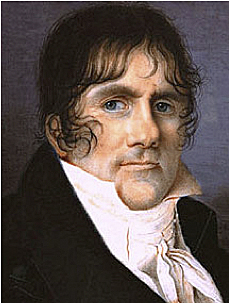
8. Paul Barras (1755-1829) was a former Viscount and an elite regiment officer (Languedoc) in the Ancien Régime. But after the fall of the Bastille, Barras became a revolutionary and was elected a Jacobin Deputy to the National Convention in 1793. Fearing for his life in the vicissitudes of the Reign of Terror, he joined the conspiracy of Joseph Fouché and Jean Tallien that ousted Maximilien Robespierre (1758-1794), “the Incorruptible.” In the conservative Thermidorean reaction that followed in July 1794, Barras led the guard that arrested Robespierre, St. Just, Couthon, and their followers, and sent them to the guillotine, ending the Terror. Barras was instrumental in the formation of the Directorate (1795-1799) and the Constitution of the Year III. Barras began to live the good life, and it was he, who gave his discarded but well-connected mistress, Josephine de Beauharnais, to Napoleon Bonaparte and arranged the appointment of “the Little Corporal” as commanding general of the Revolutionary Armies in Italy. Although Barras was the strongman of the Directorate, he accepted the bribe that promoted (along with Abbé Sieyes, another Director) the overthrow of his own government and facilitated the coup d’ état of 18 Brumaire in 1799, abolishing the Directorate and establishing the Consulate with Napoleon at its head. He was exiled to Rome during the years Napoleon was in power but returned to France and his estates to complete his memoirs after the Emperor was defeated at Waterloo (June 18, 1815). A runner-up for this post would be Abbé (Emmanuel) Sieyes, the defrocked priest, who wrote the incendiary pamphlet, “What is the Third Estate?” that helped ignite the French Revolution during the convocation of the Estates General. Sieyes was an early leader of the revolution, who disappeared after the fall of the Constitutional Republic in 1792, only to reappear after the Thermidorean reaction and play a big role during the Directorate. When asked where was he during the Terror? Sieyes replies: “I survived.” We think though Barras, not Sieyes, more deservingly earned the dubious place in this list.
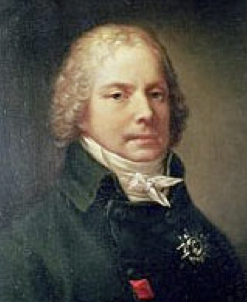
7. Charles Maurice de Talleyrand-Périgord (Archbishop of Reims; Prince de Talleyrand; 1754-1838) was another Ancien Régime official to become a revolutionist, then an outlaw, and finally an opportunistic statesman, capable minister and savvy diplomat in successive governments — no matter who was in power. His full career is beyond the scope of this article. Suffice to say, Talleyrand believed that treason was a matter of timing, and he served as an ecclesiastical authority in the Ancien Régime as well as diplomat and government minister successively in the Directorate, in the Consulate and Empire of Napoleon, and during the Bourbon Restoration. Talleyrand then turned revolutionist again in the Revolution of 1830 (along with the aging Marquis de Lafayette in an episode both humorous and moving, as related in Simon Schama’s Citizens), and finally served as Ambassador to Britain under King Louis Philippe, only to die in his own bed in 1838 at age 84. Talleyrand was the great statesman and diplomat who represented defeated France skillfully at the Congress of Vienna (1815), and yet, as Foreign Minister, Talleyrand had also been behind the scandalously corrupt XYZ Affair (1797), attempting to obtain a bribe from the American ministers to France. Serving Napoleon, he intrigued and conspired against his own French Emperor with Czar Alexander I of Russia at a time when the two emperors were wrestling for ascendance and the future of Europe hanged in the balance. Talleyrand’s loyalty to France has been defended as not serving every regime but as “serving France under every regime.” A worthy runner-up for this place in history is Honoré Gabriel Riqueti, Comte de Mirabeau (1749-1791), but in reality, Mirabeau’s course of action should be understood, not as a betrayal of the Revolution but as an espousal of a constitutional monarchy and a more moderate course for the Revolution he had championed but that had gone far enough, leading to a calamity for France. The pity is that Mirabeau did not live long enough to prevent the bloodshed, the Terror and the wars — and all the suffering that entailed for France and the rest of Europe. Mirabeau was serving France during the early phase of the Revolution, not betraying her, à la Talleyrand. Prince de Talleyrand came full circle more than once and would necessarily be included in other lists of exemplary diplomats and even statesmen of all times.
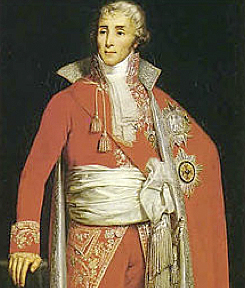
6. Joseph Fouché (Duke of Otranto; 1759-1820) was yet another French revolutionary, who has been called “an opportunist,” supposedly “siding with every party in power from the French Revolution through the Bourbon Restoration” and the “one of the indispensable men of the Empire of Napoleon I, who created him Duke of Otranto in 1809.” (Columbia Encyclopedia) But that appellation does not completely fit Fouché and is better applied to Talleyrand as described in his own entry. Fouché was much more than that. He was a genuine radical Jacobin, who as a plenipotentiary “representative in mission” from the National Convention extended the Reign of Terror to the provinces. As a radical atheist, akin to the Hébertists, he decreed that the inscription, “death is eternal sleep,” be placed at all cemetery gates during his enforcement of the Jacobin dechristianisation policy. Eventually, Fouché’s “worship of Reason” philosophy clashed with Maximilien Robespierre’s new civic religion, “the Cult of the Supreme Being.” Fouché’s anticlericalism flouted the Incorruptible’s new theology, and Fouché wisely deemed himself a marked man. Fearing for his life, Fouché planned and together with Jean Tallien and other co-conspirators successfully overthrew the dictatorial rule of Robespierre and the Committee of Public Safety on July 27, 1794 (9 Thermidor). Suddenly Fouché, the radical Jacobin atheist, had become the indispensable hero in ending the Terror and bring on the conservative Thermidorean Reaction in the summer of 1794. Fouché was a resourceful survivor. He went on to serve Napoleon as his Chief of Police, and in that efficient role, Fouché has even been styled, “the father of the police state.” Once again his historic role has been overstated. The damning sobriquet is more appropriate for certain, even more misguided, disciples of the French revolutionaries (of whom Fouché himself was one). I refer to Vladimir Lenin’s chief of police, Felix Dzerzhinsky (“Iron Felik”) who founded the original Soviet secret police, the dreaded and efficient Cheka, the forerunner of the better known KGB. A runner-up for this position in the list is Jean Tallien (1767-1820), who joined Fouché in the conspiracy ostensibly because Tallien had fallen in love with the aristocratic Thérésa Cabarrus, who was on her way to the guillotine, and Tallien had to save her by overthrowing Robespierre and ending the Terror. Despite the romantic turn of events with Tallien (described in novelistic fashion in Paris in the Terror by Stanley Loomis), Fouché is much more deserving of this slot.
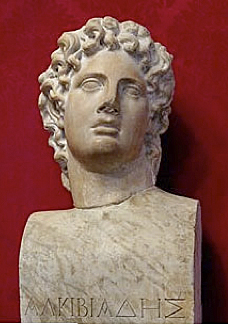
5. Alcibiades (450-404 BC) was an Athenian politician and general, who changed his political allegiance and switched sides in the Peloponnesian War between Athens and Sparta, as frequently as a man changes his shoes. As a young man, ambitious and proudly descended from an old aristocratic family (i.e., the Alcmaeonidae), Alcibiades was arrogant and self confident, but he was a friend of Socrates, the one person he respected. He became a strident politician and at the onset of the War, he advocated an aggressive stand against Sparta. He proposed and convinced the Athenians to launch the disastrous Sicilian Expedition under his and Nicias command (415 BC). Shortly after, though, he was recalled to Athens to face charges of sacrileage (i.e., defacement of the statues of the city gods and profaning the Eleusinian Mysteries), allegedly committed some nights before the fleet was launched. Alcibiades did not return to Athens, instead he defected to the enemy, where he cooperated with the Spartans as military advisor in the war with Athens (415-412 BC). in Sparta, though, Alcibiades made enemies too, and to make matters untenable for him, Alcibiades seduced the wife of the Spartan King Agis II. Avoiding capture, Alcibiades then fled to Persia, the traditional enemy of all Greeks, once again changing his allegiance (412-411 BC). He advised the Persian satrap Tissaphernes to allow the Greeks “to wear each other out” in the war to make it easy for the Persians to conquer them. But with his political allies regaining control in Athens, Alcibiades was recalled, and once again was appointed “Strategos,” an Athenian military commander (410-408 BC). Military and naval victories gained by the Spartans, coupled with the vicissitudes of Athenian politics when his political enemies regained power, Alcibiades was once again exiled. Reportedly he was killed in Phrygia, where he was seeking Persian aid for the Athenians, by assassins sent by the Spartans. His life remains as controversial for his fellow Athenians and ancient Greek historians as for modern scholars.
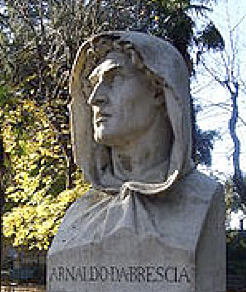
4. Arnold of Brescia (c. 1090-1155) was an Italian heretic and self-appointed reformer of the Christian Church. He was a pupil of the philosopher Peter Abelard, and as such, Arnold attacked St. Bernard of Clairvaux, a revered theologian (and promoter of the Second Crusade), and various aspects of Catholic teachings, as well as what Arnold considered the worldliness of the Church. He condemned the Church for exerting temporal authority, maintained that sinful priests could not administer the sacraments and that such sacraments were therefore invalid, and other heresies. Arnold was excommunicated by Pope Eugenius III for these heretical pronouncements and his vehement attack on the temporal dominion of the Church. Arnold then went further in his personal rebellion, taking advantage of the papal schism in the Church posed by the struggle of the Pope against various usurper anti-popes, to attempt to completely overthrow papal authority in Rome and create a civil government headed by himself. He became a leader of the radical Commune of Rome, which aimed to establish the independence of Italian cities and overthrow papal authority. Arnold became an ambitious political demagogue and placed the government of the Commune ostensibly in the hands of the lay and rich merchants of the cities, which he called the “Equestrian Order, ” in the fashion of the ancient Roman Republic. But a new and more forceful Holy Roman Emperor had just been elected, Frederick Barbarossa, who considered Arnold a dangerous troublemaker. Despite his own conflict with the Church, Barbarossa marched south to Italy and crushed Arnold and the Commune. Arnold was arrested, handed over to the Prefect of Rome, and executed. A runner-up for this position would have to go to Girolamo Savonarola (1452-1498), the Italian Dominican friar turned-religious fanatic and heretic. He overturned the enlightened rule of the Medici to establish a religious utopia, a New Jerusalem, in the process turning Renaissance Florence with “bonfires of the vanities” and pious processions into a puritanical living hell. His trial by fire (“walking through fire”) was a failure; he and his followers were arrested, tried, condemned as heretics and schismatics, and executed. Present opinion has partially rehabilitated Savonarola’s memory.
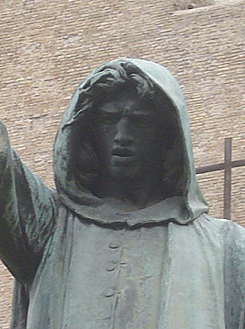
3. Cola di Rienzo (1313-1354) was a Roman medieval demagogue. He was appointed Papal Notary and Envoy to Rome by Pope Clement VI of Avignon (1343). In Rome, ancient history and popularity fermented and intoxicated his own ambition, and he proclaimed himself “Tribune of the People” in the fashion of the ancient Roman Republic. Eerily similar to Arnold of Brescia, Rienzo set about purportedly to restore the Roman Republic under his own authority. He incited a popular insurrection that spread throughout the central Italian peninsula. His ego further inflated, Rienzo began calling himself “Augustus,” but at this point his enemies in the aristocracy rebelled and overthrew him. He fled to Avignon where Pope Innocent VI assisted him, and sent him back to Italy to restore papal authority. Rienzo was accompanied by an army headed by a Cardinal-General. Rienzo regained control of Rome, and instead of restoring papal authority, as he had been instructed, he appointed himself “Senator” and exerted authoritarian and arbitrary rule (1354). But now, the notoriously fickle and vicious Roman mob — the same enthusiastic mob who had cheered and supported him in the past — revolted and turned against him. Defeated, Rienzo was seized by the mob and murdered. A dramatized, intriguing, and novelistic account of his end is related in the historic novel, Queen of Night by a British author with the nom de plum of Alan Savage.
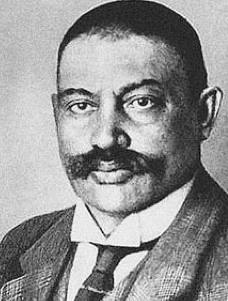
2. Yevno Azev (or Evno Azeff; 1869-1918) is the strangest, and perhaps the most duplicitous and psychopathic character in this list. He was Jewish Russian militant revolutionary as well as an agent provocateur, spy, and a police informant for the Tsarist secret police, the Okhrana. A member of the Socialist Revolutionary Party (SR) of Russia, Azev became the head of the SR “Fighting Section,” between 1904-1909. In this capacity, he was the head of the terrorist and assassination squads running rampant in pre-Revolutionary Russia. At the same time, Azev had become a paid Okhrana informant, informing the police selectively on his comrades, while continuing to order political assassinations and sabotage to maintain his credibility in the SR. As agent provocateur, instigating and carrying out acts of terrorism, Azev’s betrayal justified the police arresting and interrogating his fellow terrorists. In his double role, he ordered and accomplished the assassination of his own boss, Interior Minister Vyacheslav Plehve (1904), who officially supervised the Okhrana. Other notable assassinations carried out under his watch were those of the Tsar’s uncle, the Grand Duke Sergius Alexandrovich (1905), and the altruistic revolutionary, Father Gapon (1906). In the end, Azev became a double or triple agent and did not himself know which side he favored. As the assassinations continued and his comrades were captured, he felt under suspicion within the SR. Finally, fellow revolutionary Vladimir Burtsev, with his own connections in the police, investigated and exposed Azev (1909). Although apprehended and tried in an SR “Court of Honor” in Paris, Azev escaped to Germany and died of renal failure in 1918.
His only possible contender for this post, in my opinion, is another sinister Russian figure (from the mid-20th century and thus disqualified). I refer to Naftaly Frenkel (1883-1960) who was called “a Turkish Jew born in Constantinople” by Aleksandr Solzhenitsyn in his monumental The Gulag Archipelago (1973). Frenkel was born in Haifa (then part of the Ottoman Empire) and became a Soviet secret police informant after spending time in the Gulag at the Solovetsky Islands in the White Sea. Cunningly switching roles and showing his talent for organization there, Frenkel gained Stalin’s trust, became a reorganizer of more “efficient slave labor.” He was appointed economic administrator of the forced labor camps of the Gulag Archipelago and was one of the few people protected by Stalin, despite the fact he was Jewish and accused of being a Trotskyite. He was entrusted with the construction of the White Sea-Baltic Canal, the Baikal-Amur Mainline railway camp and other brutal projects, where thousands of prisoners lost their lives. Frenkel was head of the Chief Directorate of Railroad Construction (1937-1945), and after his retirement (two years later), he remained associated with the secret police until his death in 1960.
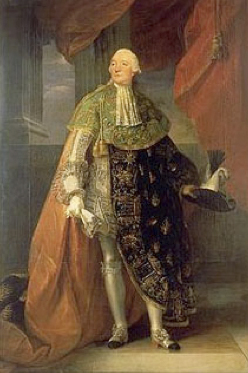
1. Louis Philip II (Duke of Orléans; Philip Égalité; 1747-1793) After much thought, I decided the Duke must be at the top of this list. As the head of the Orléanist cadet branch of the House of Bourbon, ruling France at the time of the fall of the Bastille in 1789, the Duke of Orléans was instrumental in intriguing against his cousin, King Louis XVI, fomenting insurrection, and ushering the chaos of the French Revolution. More than anyone, he used his fabulous wealth, as the richest man in France, and extensive connections as Grand master of Freemasonry to undermine royal authorities and French institutions for his own designs. Yet, it is highly ironic, despite having his name changed to Philip Égalité by the Paris Commune, and being a leading revolutionary, he was distrusted by Maximilien Robespierre and, eventually, his fellow Jacobins, and thus, paid the ultimate price at the guillotine — he was executed on November 6, 1793. Still ironic is that ultimately it was not upon his person, but upon his more worthy son, who was bestowed with the French Crown as Louis Philip I, King of the French (1830-1848) accomplishing the Duke’s deepest hope. Thus it was his more conservative son and heir who actually attained the place Égalité coveted and wanted so much for himself: the first Orléanist King of France. The Duke, subsequently renamed Philip Égalité, maligned his cousin and calumniated Queen Marie Antoinette; spent a fortune at the Palais Royal and elsewhere, intriguing and propagandizing against the King; incited and fomented revolution from the time he was Grand Master of the ruling body of the Freemasons of France and then as a member of the Jacobin Club. At the trial of King Louis XVI, the Duke voted for execution. It must also be said the Duke saved the lives of several persons under suspicion by the revolutionary authorities, including the governor of the Tuilleries at the urging of his friend and mistress Grace Elliott, but it is beyond my power to absolve him of culpability in playing a leading role in creating intrigues and fomenting the French Revolution, and, finally, casting the fatal vote for the execution of his royal cousin.
That is my list. Who does your list include and in what order?
References
1. The Encyclopedia of Revolution and Revolutionaries: From Anarchism to Zhou Enlai by Martin Van Creveld, Editor-in-Chief. Facts on File, New York, NY, 1996.
2. The Concise Columbia Encyclopedia. Franklin Electronic Publishers, 1991.
3. The Story of Civilization, Volume 4: The Age of Faith by Will Durant. MJF Books, New York, NY, 1950. Here the reader will find the stories of Cola di Rienzo and Arnold of Brescia.
4. The Story of Civilization, Volume 10: Rousseau and Revolution by Will and Ariel Durant. MJF Books, New York, NY, 1967. This volume is essential for an understanding of the career of John Wilkes.
5. Citizens: A Chronicle of the French Revolution by Simon Schama. Alfred A. Knopf, New York, NY, 1989.
6. Plutarch: The Lives of the Noble Grecians and Romans. Dryden Translation. The Modern Library, New York, NY, 1864, pp. 233-262.
Additional Reading
6. Robespierre: The Fool as Revolutionary by Otto Scott. The Reformer, Windsor, NY, 1974.
7. La Revolución Francesa by Dr. José A. Mijares. Nebraska Printing, Tampa, FL, 2001.
8. Paris in the Terror by Stanley Loomis. Dorset Press, New York, NY, 1990.
Written by Dr. Miguel Faria
Miguel A. Faria Jr., M.D. is Associate Editor in Chief and World Affairs Editor of Surgical Neurology International. He is Clinical Professor of Surgery (Neurosurgery, ret.) and Adjunct Professor of Medical History (ret.), Mercer University School of Medicine. Dr. Faria is the author of Cuba in Revolution: Escape From a Lost Paradise (2002). Dr Faria has written numerous articles on Stalin, communism, and the Soviet Union, all posted at the author’s website: HaciendaPublishing.com & https://drmiguelfaria.com.
This article may be cited as: Faria MA. The Ten Shadiest and Most Devious Politicians/Statesmen/Revolutionists — From ancient times to the early 20th century. Available from: https://haciendapublishing.com/the-ten-shadiest-and-most-devious-politicians-statesmen-revolutionists–from-ancient-times-to-the-early-20th-century.
This article was also posted on RealClearHistory.com on September 20, 2014 under the title, “Top 10 Most Devious Politicians.”
Copyright ©2014 -2018Miguel A. Faria, Jr., M.D.